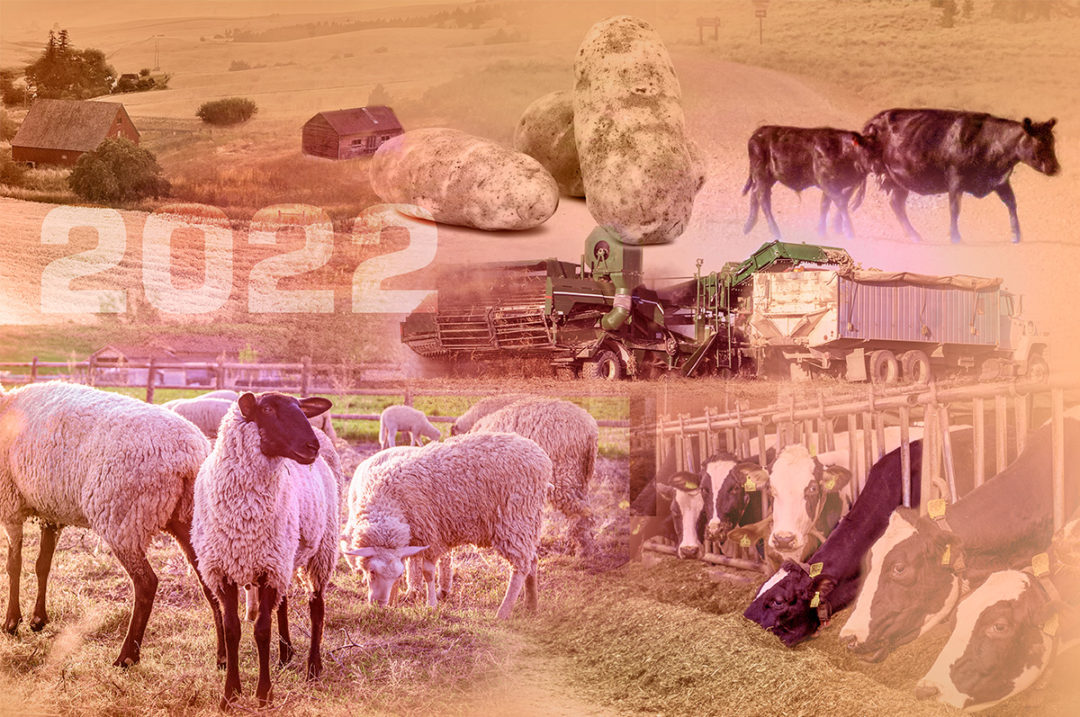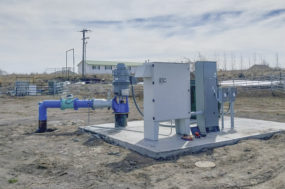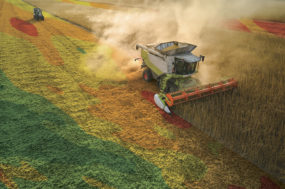Idaho farmgate cash receipts and net farm income reached record highs in 2022. High prices contributed to record receipts for all major crops and livestock groups.
Net farm income for 2022 was estimated to be $3 billion, 56% higher than 2021, a new record all-time-high real net income for Idaho agricultural commodities (Table 1). At close to $9 billion, estimated expenses also reached a record high, up 20% over 2021. Fortunately, commodity price increases are expected to outweigh cost increases in 2022.
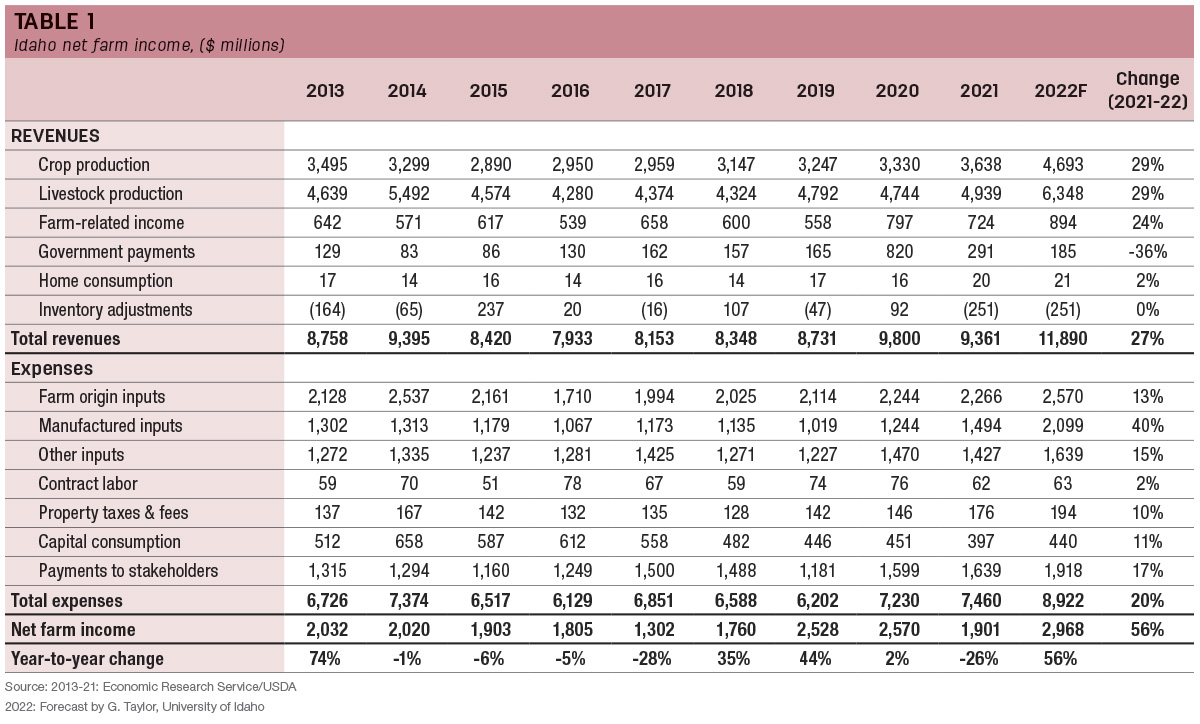
Cash receipts for livestock and crops in 2022 are estimated at $11 billion, an estimated 29% increase over 2021. Cash receipts for milk, Idaho’s leading agricultural commodity, were estimated to be 38% higher than 2021. Potatoes, Idaho’s highest revenue crop, were estimated to be 36% higher than 2021 (Table 2).
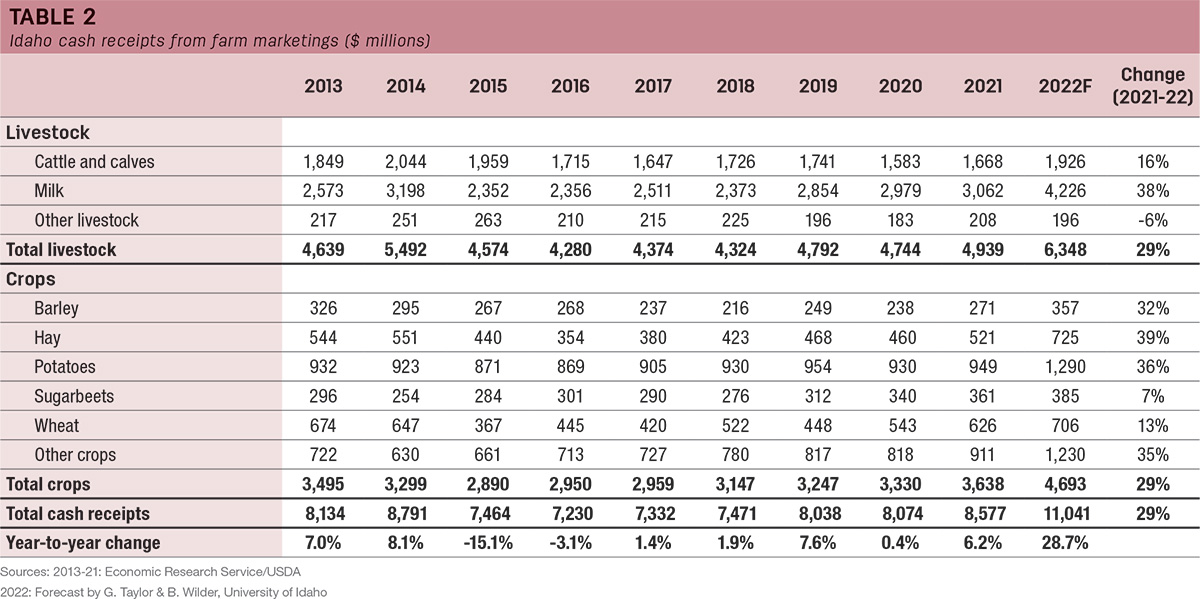
Highlights
- Exports from farms and food processors create a ripple effect throughout Idaho’s economy, ultimately helping to make agribusiness one of Idaho’s largest industries. About $1 of every $6 in sales is directly or indirectly created by agribusiness.
- Idaho, the top potato producer, witnessed record-high potato revenues in 2022, which led to estimated cash receipts nearing $1.3 billion.
- Hay surpassed wheat to become Idaho’s No. 2 crop with estimated 2022 cash receipts of $725 million. Wheat had a strong showing as the third largest crop with an estimated $706 million in 2022 cash receipts.
- Idaho, ranking third in the U.S. for milk production, garnered its highest-ever milk revenues in 2022. With estimated cash receipts for 2022 of $4.2 billion, revenues from milk production are the highest of all agricultural commodities produced in Idaho. Second to milk regarding cash receipts are those from cattle and calves, which in 2022 were $1.9 billion.
- Idaho agriculture is driven largely by livestock. Cash receipts from milk, cattle and calves, and other livestock (trout, sheep, etc.) comprised 57% of total agricultural cash receipts for 2022. Hay, silage, feed grains, and the byproducts from sugarbeet and potato processing are used as feed for Idaho livestock.
- Except for 2009 – a year of disastrously poor milk prices – livestock cash receipts have surpassed crop cash receipts for every year since 2001. In 2022, livestock cash receipts are estimated to surpass crop cash receipts by more than $1.65 billion.
- Idaho’s net farm income for 2022 is estimated at $3 billion, which is 56% above that of 2021 and the highest in recorded history.
- Federal government payments to Idaho producers in fiscal year 2022 are estimated at $185 million, a decrease of 36% from 2021.
Contribution of agribusiness to Idaho’s economy
Agribusiness is a vertically integrated industry comprising food production and processing. In providing food to national and international markets, agribusiness creates business sales and jobs throughout the Idaho economy and contributes to the state’s gross domestic product (GDP). Agribusiness export dollars ripple throughout Idaho’s economy, creating (directly and indirectly):
- 17% of Idaho’s total economic output
- 12% or one in every eight jobs in the state
- 12.5% of Idaho’s GDP
Idaho farm cash receipts
Idaho’s 2022 farm cash receipts are estimated to be a record high of $11 billion – a 28% increase over 2021’s $8.6 billion and exceeding the previous record high of $8.8 billion from 2014 (Figure 1).
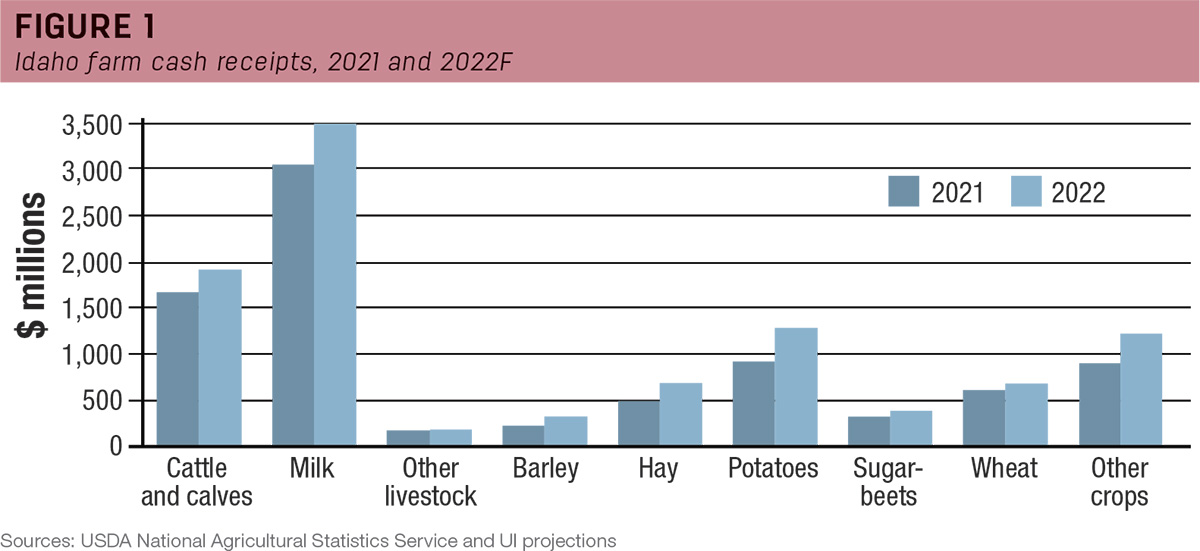
Crop revenues in 2022 are estimated at $4.7 billion, up 29% from 2021’s $3.6 billion and 39% greater than the 10-year average. Hay (up 39%), potatoes (up 36%), other crops (up 35%) and barley (up 32%) had the largest increases in cash receipts relative to 2021. Wheat and sugarbeet cash receipts were up 13% and 7%, respectively. All major crops are expected to see increased cash receipts. Potato receipts recorded an all-time high with open-market potatoes selling for as much as 150% over estimated contracted potato prices at times during the year.
Livestock revenues are estimated at $6.3 billion, up 29% over 2021 and 31% greater than the previous 10-year average. Cash receipts from cattle and calves are estimated at $1.9 billion (up 16%), while receipts from other livestock are estimated to be approximately $200 million (down 6%). Milk receipts are the largest driver of growth in this category with projected 2022 cash receipts of $4.2 billion (up 38%).
In real dollars (inflation-adjusted to 2012), estimated cash receipts are 61% greater than the 43-year average (1980-2022). Extreme volatility in commodity prices over the past decade has increased agricultural revenue volatility to levels not seen since the 1970s and 1980s.
Idaho net farm income
Net farm income, revenues minus costs, is the farmer’s bottom line. Revenues include cash receipts from crop and livestock sales, inventory changes, the estimated value of home consumption, government payments, machine hire and custom work, forest product sales, and the imputed rental value of farm dwellings. Farm expenses include farm-origin inputs (purchased livestock, feed and seed), manufactured inputs (fertilizers, fuel and electricity), and “other inputs,” including repairs and maintenance, machine hire and custom work, marketing, storage, transportation and contract labor.
The projected 56% increase in 2022 Idaho net farm income reflects a 27% increase in total revenues and a 20% increase in total expenses. Net farm income in 2022 is estimated at an all-time high of $3 billion, which is 43% greater than the 10-year average. In contrast, the USDA’s net farm income estimate for 2022 is $161 billion, up 14% from 2021 (Figure 2).
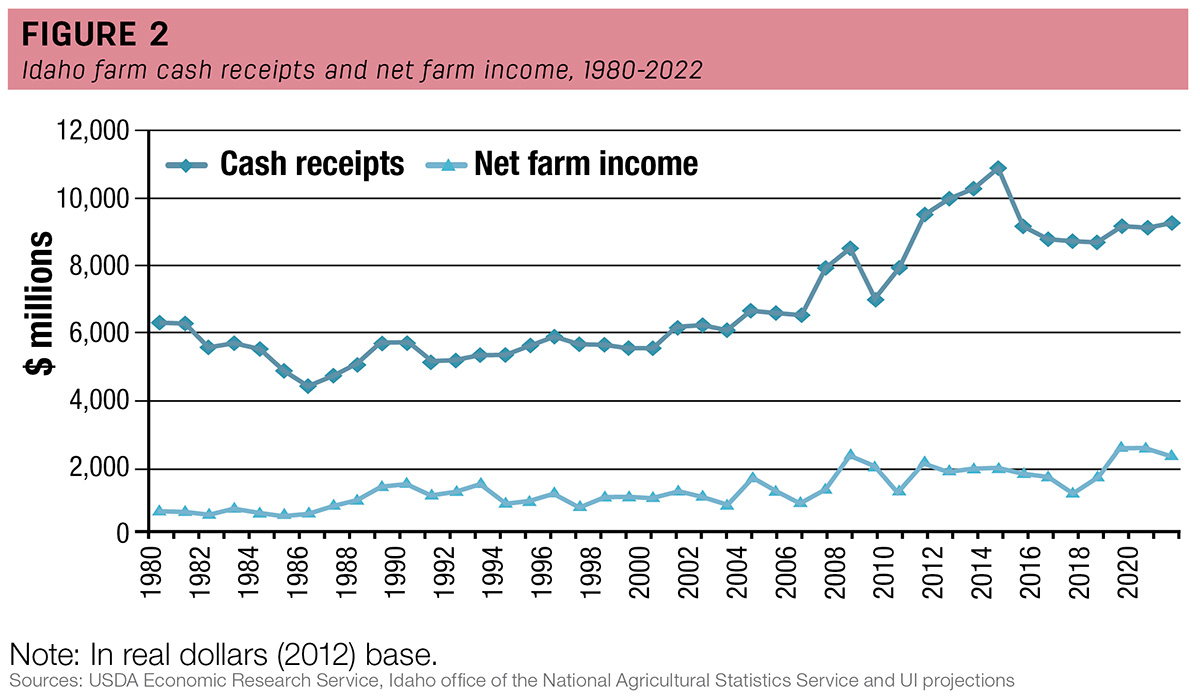
Historically, net farm income is much more volatile than gross cash receipts. In five of the past six years, Idaho experienced double-digit percentage swings in net farm income. Real-dollar Idaho net farm income (inflation-adjusted to 2012) was the highest value in recorded history, with the next highest being in 2011 ($2.94 billion). Idaho’s real net farm income in 2022 is estimated at 62% above the previous 43-year average (1980-2022).
The overall increase in farm expenses in 2022 is primarily attributed to 40% increases in manufactured (fertilizer, chemicals and fuel) inputs, 17% increases in payments to stakeholders (non-cash compensation, net rents and interest expense), and 13% increases in farm origin (feed, seed and replacement livestock purchases). All other inputs, including labor, property taxes and fees, and capital consumption all increased by percentages ranging from 2% to 11% relative to 2021.
Idaho government payments
Federal government payments to Idaho agriculture in fiscal year 2022 are estimated at $185 million, which is 36% lower than in 2021 but still 42% greater than the average of the five years leading up to 2020. The years 2020 and 2021 are excluded from that average due to COVID-19-related payments. Federal payments are expected to decline or stabilize moving forward. Idaho is estimated to have received around 1% of total 2022 payments to U.S. agriculture (Figure 3).
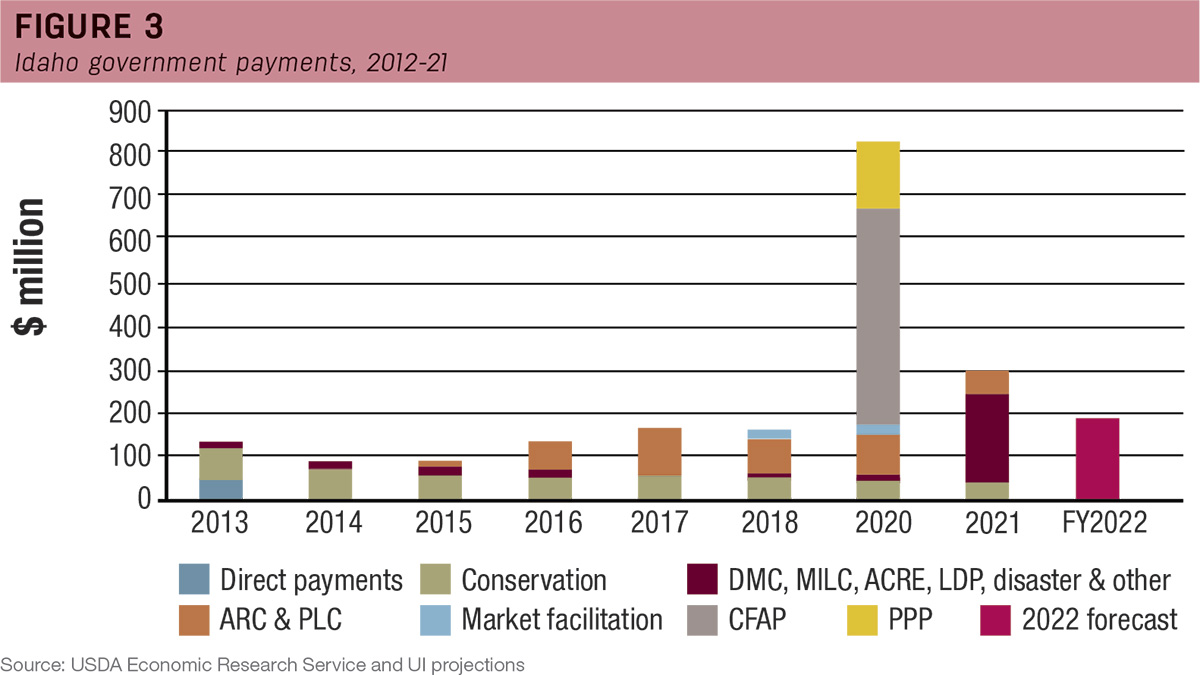
Idaho agriculture’s GDP
GDP measures value added, the value of output minus the value of intermediate goods and services used in production. GDP grows when farms and businesses become more efficient: increasing output while reducing the use of intermediate inputs. In 2021, Idaho’s nominal GDP was approximately $80 billion, of which 3.7% was generated by farming. Farm GDP in 2021 decreased 34% to $3 billion from $4.5 billion in 2020. It’s estimated that the final 2022 Idaho Farm GDP will be back on trend and substantially exceed 2020 levels. Over the past 25 years (1997-2021) inflation-adjusted (2012 dollars) Idaho GDP has grown over 115%, while Idaho Farm GDP increased around 70% (Figure 4).
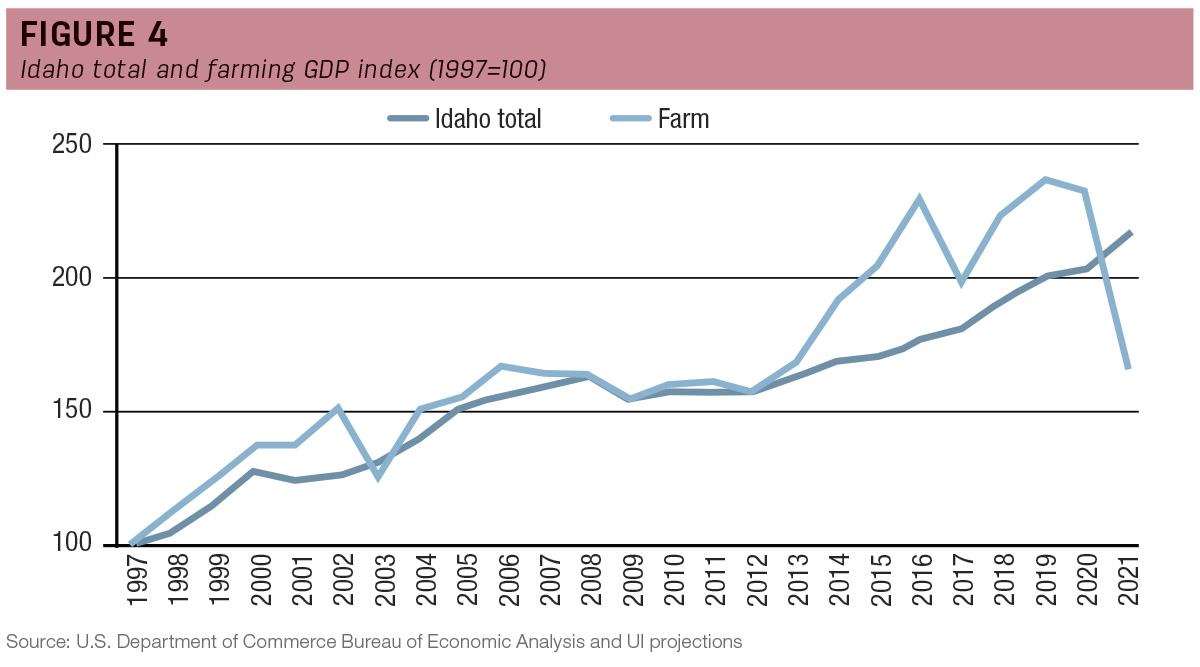
Idaho livestock and crop revenues
Cattle and calves – In 2022, revenue from cattle and calves is estimated at $1.9 billion. Most of this increase is attributed to higher beef cattle prices. While the USDA National Agricultural Statistics Service reports that the Idaho beef cow inventory was up 7% on Jan. 1, 2022, (498,000) relative to Jan. 1, 2021, (464,000), the U.S. beef industry as a whole experienced heavy culling in 2022, and it is expected that the Jan. 1, 2023, numbers will be near where they were to start 2021.
Milk – Extremely strong milk prices led to increased milk revenues of $4.2 billion in 2022, up from $3 billion in 2021. Production volumes were up over 1% in 2022 compared to 2021. Milk cow inventories in Idaho as of Jan. 1, 2022, were 652,000, which is a 1% increase compared to 2021. Prices ranged from $23-$27 per hundredweight (cwt) throughout 2022; on average, this is a 36% increase over 2021.
Other livestock – Revenues for other livestock (e.g., trout, sheep, goats) were estimated at $196 million, a 6% decrease from 2021. This level of revenue is lower than the previous 10-year average value of $220 million. The year-over-year decline is primarily attributed to an over 50% decline in lamb values as compared to 2021. Other livestock was the only commodity to decline.
Barley – Idaho barley production in 2022 was up by an estimated 15.4 million bushels (35%) relative to 2021. An 8% increase in harvested acres and a 25% increase in per-acre yields both contributed to the production increase. This, paired with a 29% increase in prices, contributed to 10-year high barley gross revenues. Barley cash receipts are estimated at $356 million, 32% higher than 2021.
Hay – As measured by sales, hay surpassed wheat in 2022 to become Idaho’s second-most-valuable crop behind potatoes. Hay cash receipts for 2022 are projected to be $725 million, up 39% from 2021. Approximately 45% of the hay produced in Idaho is fed on the farms where it was produced rather than sold. Thus, the total value of hay production is estimated at $1.3 billion in 2022. Idaho hay production in 2022 was an estimated 5 billion tons, which is 9% higher than what was produced in 2021.
Potatoes – With 2022 revenues estimated to be $1.3 billion, a 36% increase over 2021, potatoes remain Idaho’s largest farm cash receipts. Planted and harvested acres of 295 million were down 6% from 2021. In addition, yields came in lower than expected at 410 cwt per acre, which is down 10 cwt per acre from 2021 yields and down 40 cwt per acre from 2020 yields. This resulted in an estimated production of 121 million cwt, a 9% year-over-year decline in production, and ultimately led to extremely high open-market potato prices in the back half of 2022. These higher prices in the last months of 2022 explain the increase in potato cash receipts for 2022 relative to 2021.
Sugarbeets – Sugarbeet yields for 2022 were marginally below those in 2021 due primarily to high heat and poor water conditions during the 2022 growing season. Sugarbeet yields in 2022 averaged 39 tons per acre, down from 39.5 tons per acre in 2021. Sugarbeet production for 2022 is projected to be 6.6 million tons. Harvested acres were steady at 172 thousand acres in 2022. Idaho’s projected 2022 average sugarbeet price of $58 per cwt is over 8% higher than the $54 average received in 2021. Sugarbeet revenues are estimated to be $385 million, 6.6% higher than the record set in 2021.
Wheat – Wheat was Idaho’s third-largest crop by revenue in 2022. Wheat revenues for 2022 are expected to be $706 million, up $80 million (a 13% increase) over 2021. While harvested acres were down 5% to 1,077 million acres, yields increased 28% year-over-year to 87 bushels per acre, leading to an overall 22% production increase of 93.5 million bushels. Geopolitical tensions and drought in many wheat production regions contributed to a $1.90-per-bushel (30%) increase in the average price received for Idaho wheat as compared to 2021.
